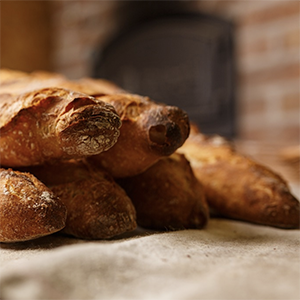Bread packaging techniques and trends

Accepted: 8 November 2022
HTML: 362
All claims expressed in this article are solely those of the authors and do not necessarily represent those of their affiliated organizations, or those of the publisher, the editors and the reviewers. Any product that may be evaluated in this article or claim that may be made by its manufacturer is not guaranteed or endorsed by the publisher.
Authors
Bread staling and microbial growth is a complex physiochemical change that occurs during bread storage mainly reducing the quality and consumer acceptance. It is significant to understand the causes of physical, chemical, and microbial spoilage of bakery products in the food industry, to prevent quality decay and economic loss for manufacturers and consumers. Traditional packaging has limitations in protecting and preserving the final products’ safety, hygiene, and quality. Effective novel strategies must be included in food packaging, especially to minimize the organoleptic losses of baked foods during their shelf life. Furthermore, owing to the spread of foodborne diseases, which directly affect the safety of the products, customer demand is increasing significantly to reduce the use of synthetic preservatives instead of natural ones. Innovative packaging is altering the way food items are packed in several ways to extend and monitor product shelf life. Traditional packaging includes packaging food in synthetic polymer film; however, modern technology allows them to interact with active/functional substances. This paper discusses innovative bread packaging strategies such as modified atmosphere packaging (MAP), active packaging (AP), intelligent packaging (IP), biosensor, and nano packaging. Furthermore, MAP and AP have received greater attention in this study due to their considerable effect in prolonging the shelf life of bread and naturally preventing fungal activity, and have gained a lot of interest among producers and consumers in recent years.
Supporting Agencies
NoneHow to Cite

This work is licensed under a Creative Commons Attribution-NonCommercial 4.0 International License.
PAGEPress has chosen to apply the Creative Commons Attribution NonCommercial 4.0 International License (CC BY-NC 4.0) to all manuscripts to be published.
Similar Articles
- Carlo Pala, Christian Scarano, Massimiliano Venusti, Daniela Sardo, Daniele Casti, Francesca Cossu, Sonia Lamon, Vincenzo Spanu, Michela Ibba, Michela Marras, Antonio Paba, Carlo Spanu, Enrico Pietro Luigi De Santis, Shelf life evaluation of ricotta fresca sheep cheese in modified atmosphere packaging , Italian Journal of Food Safety: Vol. 5 No. 3 (2016)
- Serena D'Amato, Giovanni Mazzarrino, Chiara Rossi, Annalisa Serio, Clemencia Chaves López, Gaetano Vitale Celano, Antonello Paparella, Thymus vulgaris (red thyme) and Caryophyllus aromaticus (clove) essential oils to control spoilage microorganisms in pork under modified atmosphere , Italian Journal of Food Safety: Vol. 5 No. 3 (2016)
You may also start an advanced similarity search for this article.

 https://doi.org/10.4081/ijfs.2022.10771
https://doi.org/10.4081/ijfs.2022.10771



